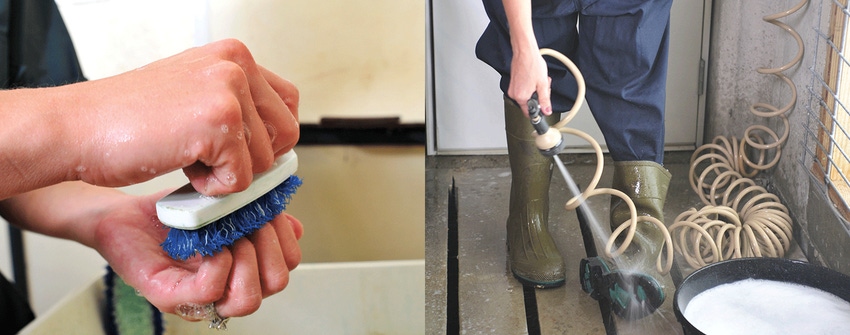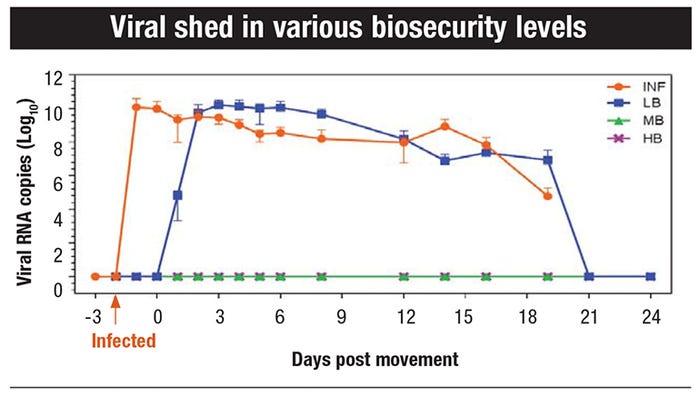Research results indicate that transmission of PEDV through contaminated personnel protective equipment is possible, and it can occur within 24 hours.
January 10, 2017

Biosecurity methods to decrease the risk of transmission of porcine epidemic diarrhea virus via farm personnel or contaminated fomites are poorly understood. This study was undertaken to evaluate the effectiveness of biosecurity procedures directed at minimizing transmission via personnel that implemented different biosecurity protocols using a controlled experimental setting.
Pigs were experimentally infected with PEDV and personnel moved between groups of infected and naïve pigs after following biosecurity measures that consisted of changing outer clothing and washing hands, showering or doing nothing.

Results
Infected pigs shed PEDV with maximum levels one day post-infection (dpi), and shedding levels remained elevated through 19 dpi. Sentinel pigs in the low biosecurity group (LB) became PEDV-positive after the first movement of study personnel from the INF group.
However, rectal swabs from pigs in the medium biosecurity (MB) and high biosecurity (HB) groups were negative during the 10 consecutive days of movements and remained negative through 24 days post-movement (dpm) when the study was terminated.
Viral RNA was detected at 1 dpm through 3 dpm from the personnel protective equipment (PPE) of LB PPE personnel. In addition, at 1 dpm, two hair/face swabs from MB personnel were positive; however, transmission of virus was not detected. All swabs of fomite from the HB study personnel were negative.
Our results indicate that transmission of PEDV through contaminated PPE is possible, and it can occur rapidly (within 24 hours). More importantly, this study also identifies biosecurity measures that can be followed to minimize the risk of PEDV transmission, in particular in regards to the role that personnel play at spreading the virus. Biosecurity procedures such as changing outer coveralls and boots, washing hands or taking a shower are recommended to lower the risk of PEDV transmission in pig farms.
Researchers: Montserrat Torremorell, Maxim Cheeran, Yonghyan Kim, My Yang and Sagar Goyal, University of Minnesota College of Veterinary Medicine.
You May Also Like



